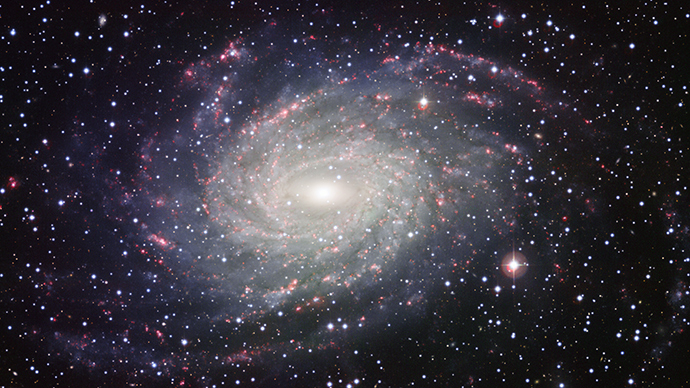Zombie howl: Newly discovered X-ray glow could be from matter-hungry stars

“Howls” of dead stars feeding on their stellar neighbors – that’s one of the ways baffled scientists described a haze of high-energy X-rays at the core of our galaxy spotted by NASA's cutting-edge Nuclear Spectroscopic Telescope Array (NuSTAR).
NuSTAR is a true pioneer – it provides detailed X-ray scanning of our galactic center like no other telescope. According to researchers, the area is packed with X-ray sources, but the new signal really stands out.
"We can see a completely new component of the center of our galaxy," Kerstin Perez of Columbia University in New York, a leading author of the new report, according to a NASA press release. "We can't definitively explain the X-ray signal yet - it's a mystery."
The researchers’ hunt for clues led some of them to believe the so-called “cosmic zombies” – such as some pulsars, white dwarfs and small black holes - could be behind the rarity. Calling stars “dead” doesn’t mean they stop affecting space bodies around them. Corpses that belong to stellar pairs can siphon matter from their companions. It’s then that the “zombies” are believed to spew out the anomalous X-rays.
Mysterious glow of high-energy X-rays could be 'screams' from zombie stars: http://t.co/SEaZ14eOnt@NASANuSTARpic.twitter.com/Rgm8gxjBwO
— NASA (@NASA) 29 апреля 2015
Another theory suggests stellar corpses may not be involved at all. Astronomers say NuSTAR could have detected cosmic rays from a much larger devourer - the supermassive black hole at the heart of the Milky Way.
Older research doesn’t make digging for the truth easier. None of the proposed theories match what science already knows about our galaxy, setting even more challenges for the astronomers.
“This new result just reminds us that the galactic center is a bizarre place,” explains co-author Chuck Hailey of Columbia University. “In the same way people behave differently walking on the street instead of jammed on a crowded rush-hour subway, stellar objects exhibit weird behavior when crammed in close quarters near the supermassive black hole.”












